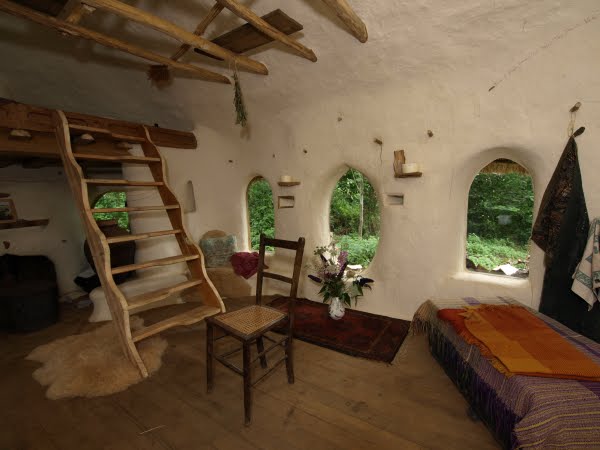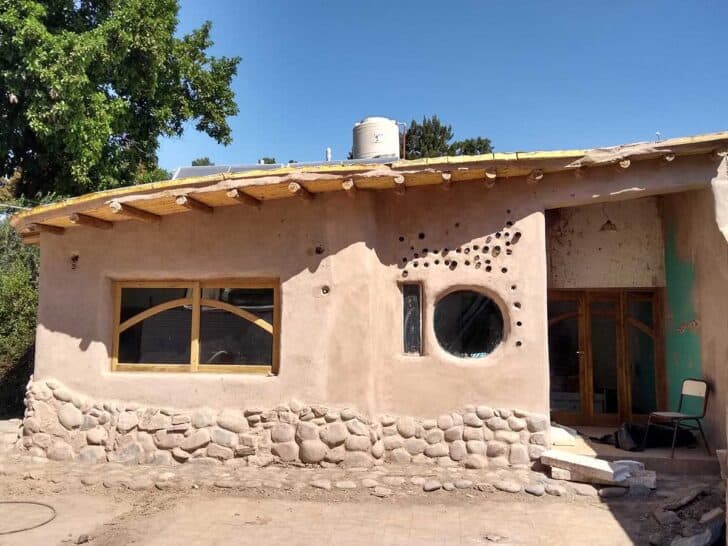Table Of Content
- What Counties in South Dakota Allow Tiny Houses – Rules & Regulations You Need To Consider
- Cob House Examples That You Will Love (And Want to Build)
- The Top 20 Cob House Builders Who Can Build Your Dream Home
- It costs a lot of time and labor.
- Why build a cob house?
- How to pick the best tiny house trailer for your build

The mixed, wet cob is packed and molded by hand on top of the masonry base without shuttering or formwork. Walls are normally 600 to 1000 mm thick, and cob is put in layers that are 600 mm deep. Each coating must have time to dry before being followed by another. Lintels for windows and doors are built as the layers build, and openings are eventually made.

What Counties in South Dakota Allow Tiny Houses – Rules & Regulations You Need To Consider
Cob might not be the right construction method for you if you’re looking for a quick turnaround time. This is true for both the inside and outside of these homes. Interior walls are made of the same materials as the exterior, and some are simply stunning. A cordwood wall is another natural building method using stacked “cordwood” (debarked tree pieces) and mortared with cob or masonry mixes. Although he lacked knowledge of cob building, Buck read some manuals, collected the necessary materials over two years, and embarked on construction.
Cob House Examples That You Will Love (And Want to Build)
Natural home building is seen as an alternative lifestyle choice. If you are incorporating electricity, lay some metal conduit out where you want it and work it into the walls as you go. You’ll need a plot of land with a relatively flat spot for the home if that’s what you are going to build. Once you choose a spot you will need to draw up some plans for the structure. Maria Marabito is a writer who specializes in sustainable travel, green living, and food issues. She holds a Bachelor of Arts in English from West Chester University.
The Top 20 Cob House Builders Who Can Build Your Dream Home
Depending on the size of the construction, finishing the walls could take months due to the need for drying. A concrete plinth and well-drained foundations must be constructed to lift the cob at least 450mm above ground level to protect the cob structure and stop water damage. Cob houses are usually built by hand without the use of power tools or machinery.
It costs a lot of time and labor.
So, you need confirmation from your local government if building a cob house in your area is okay. A cob house is one of the most durable types of architecture. It is a building technique suitable for people living in arid and mildly cold climate regions.
Best Reclaimed Wood Construction Companies in Indiana
Bumbling Forward: Consider The Cob Beehive - Newcity
Bumbling Forward: Consider The Cob Beehive.
Posted: Thu, 07 Nov 2019 08:00:00 GMT [source]
No two cob houses look exactly the same, as endless organic shapes can be created. Popular variations include the incorporation of built-in shelving or countertops. Desk areas, benches, and nooks can easily be shaped into the walls. Fireplaces are molded right into the home and are often connected to large slabs of cob, such as a bench, to increase the amount of heat the stove puts off. Because cob houses use natural, local materials for their construction, the interiors and decorations are often also chosen with sustainability and earth-friendliness in mind.
Why build a cob house?
The mixture is layered, beaten, and trimmed to the desired shape one foot at a time. There are a large number of natural ways to seal the walls of your cob house. Various plasters, finished mud layers and white washes can all be used in the final stages of the walls. This helps seal the walls and keep them lasting a long time. This company is behind the design and construction of The Cob Eco-Heal Center, a 1,500 square feet (139.35 square meters), 12-sided cob building on the East Coast.

Building a cob house requires attention to detail like any other construction project. Building a cob house is a wonderfully affordable and easy DIY option for anyone looking to build their own green home. To build a wall, place a cob for the outside face, for the inside, and the middle. But before you can play with the cob itself, you must prepare your build site.
How to pick the best tiny house trailer for your build
Your cob home has more protection against fire disasters than modern buildings. The materials used for cob, clay, and sand are naturally fire-resistant. Material Cultures used air-dried hempcrete (a bio-composite of hemp and a lime-based binder) for this roughly 970-square-foot residential build. Locally sourced timber and wood-fiber insulation are also among the materials used. A rainscreen cladding of larch, also locally sourced, is situated beneath the eaves of the shingled roof.
First permitted cob structure in Berkeley could pave way for more green building - Berkeleyside
First permitted cob structure in Berkeley could pave way for more green building.
Posted: Wed, 11 Apr 2018 07:00:00 GMT [source]
Perfectly safe alternatives to costly septic systems and wells exist, but they aren’t always legal. People have had their beautiful cottages torn down because they weren’t up to code. Others have built their small houses as “accessory buildings” or kept the footprint under 200 square feet to avoid code scrutiny. Finally, some builders have gone the extra mile to get tiny houses and natural materials approved or even added to the local code.
If you want to save money constructing your stemwall then you may want to consider using urbanite instead of stone. Urbanite is recycled concrete that comes from old sidewalks, buildings, etc. Here are some of the different styles and systems for building a cob or a hybrid cob home. A hybrid cob home is basically any home that is partially constructed out of cob and partially constructed out of another material. Adobe buildings have been a popular design choice in many parts of the world for centuries.

No comments:
Post a Comment